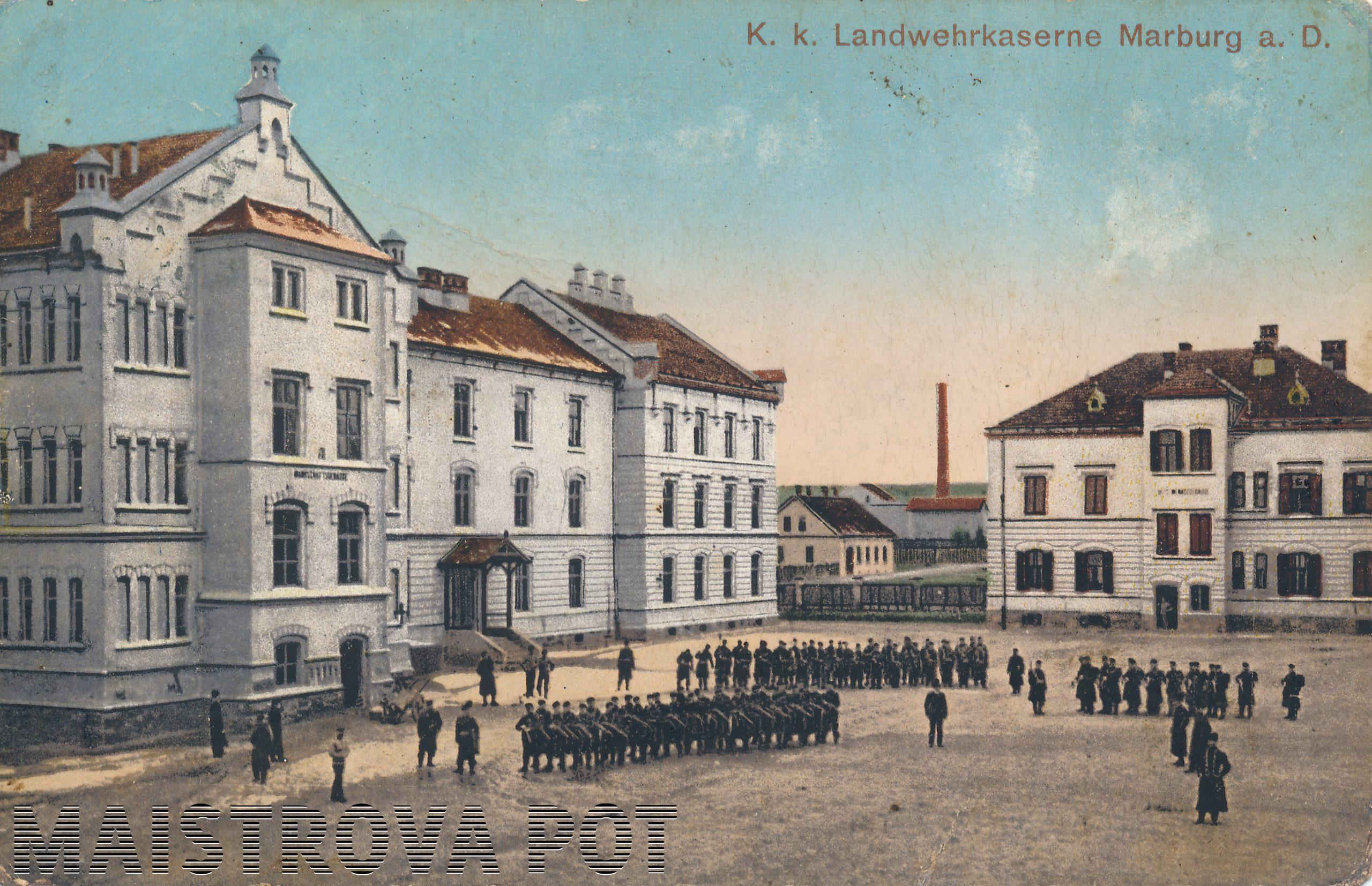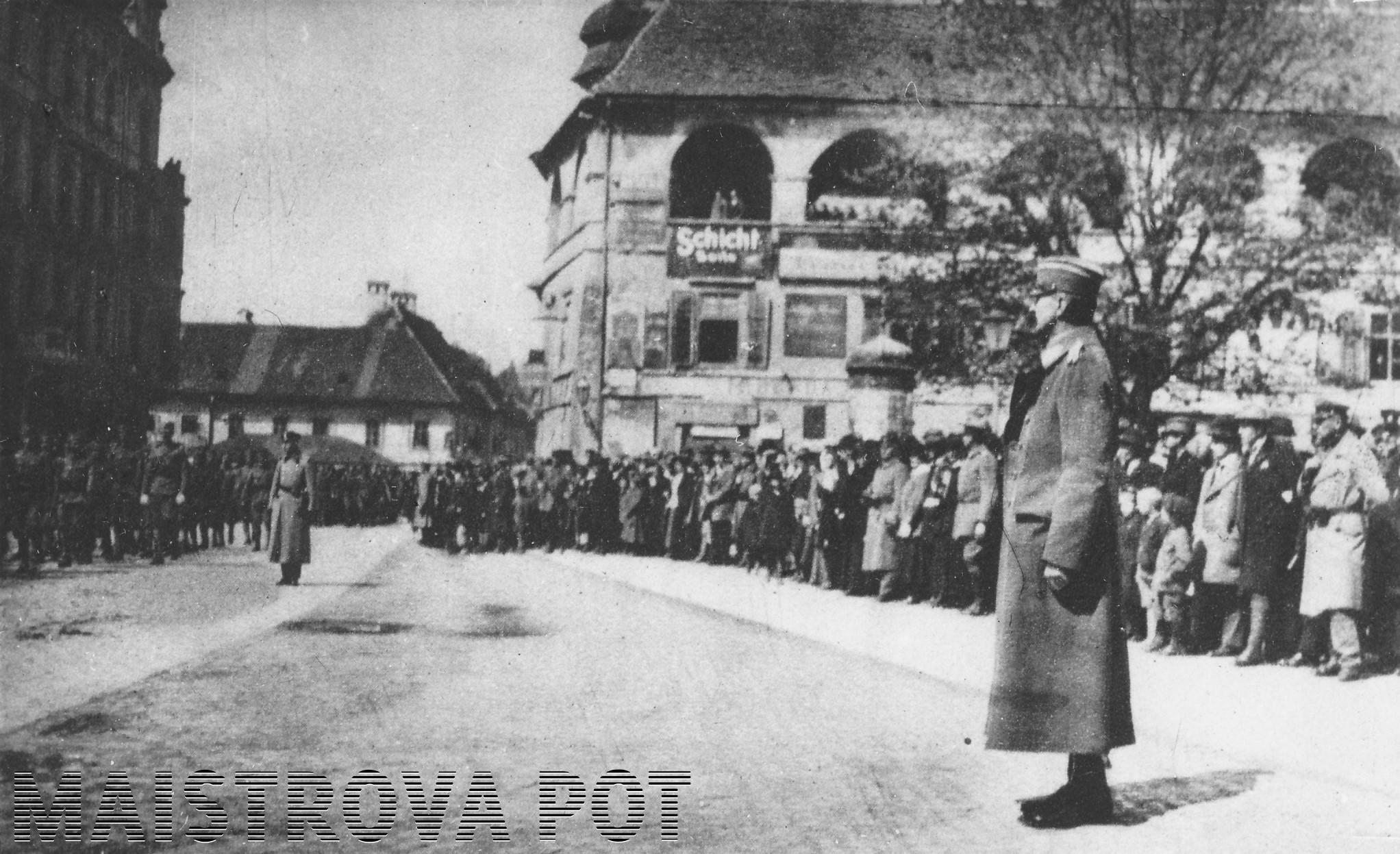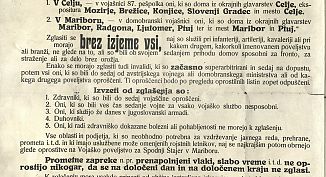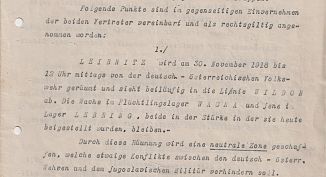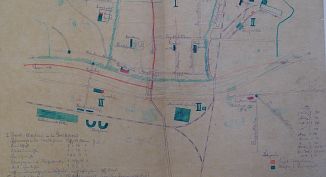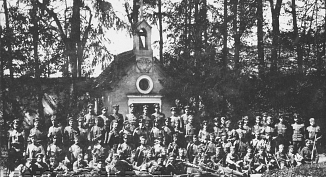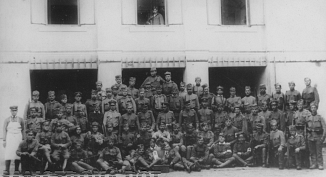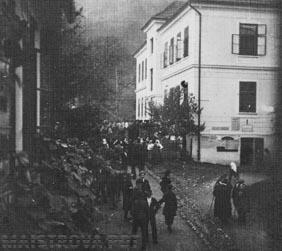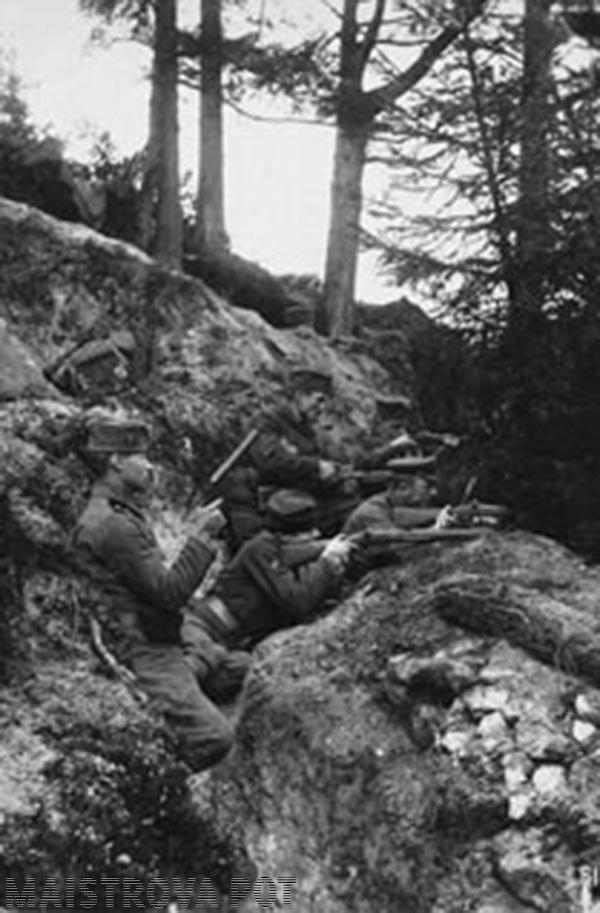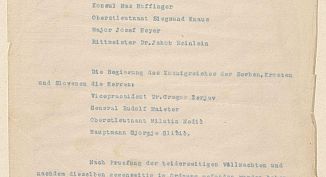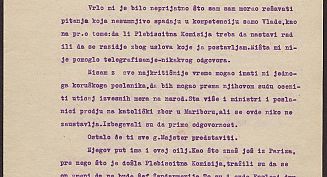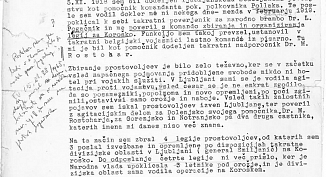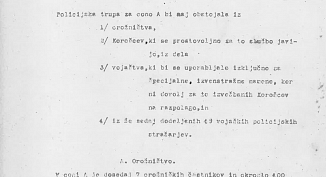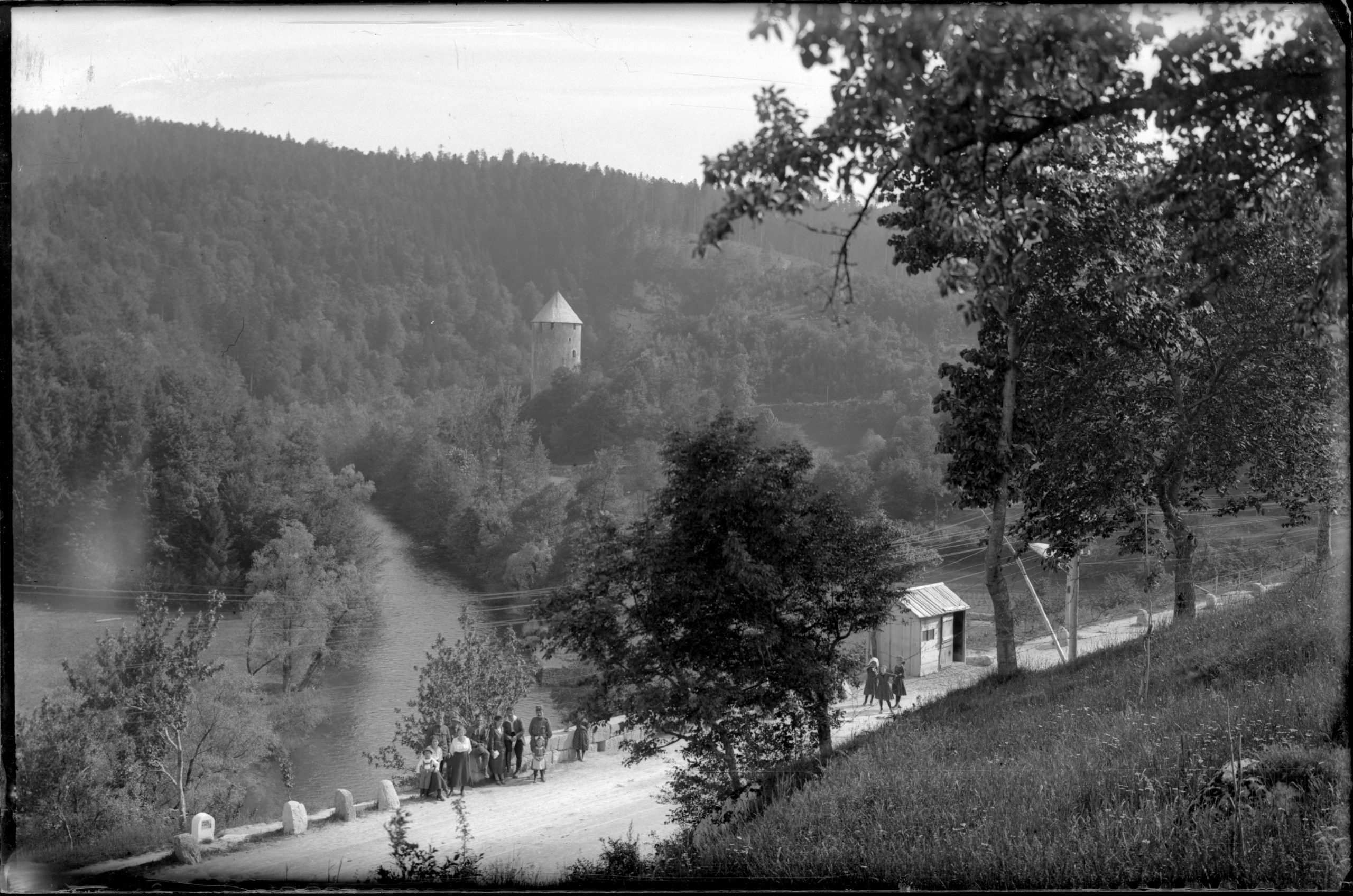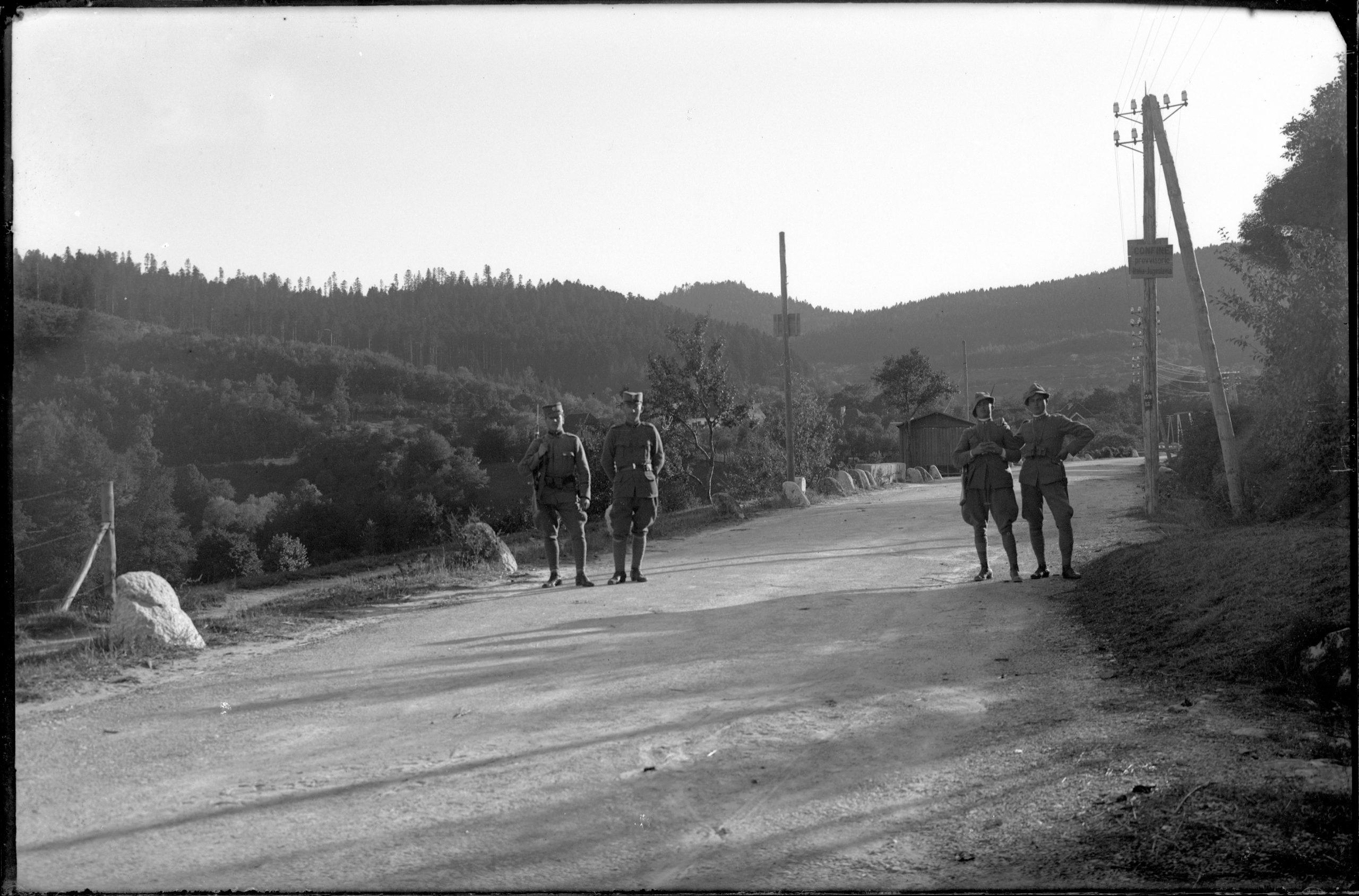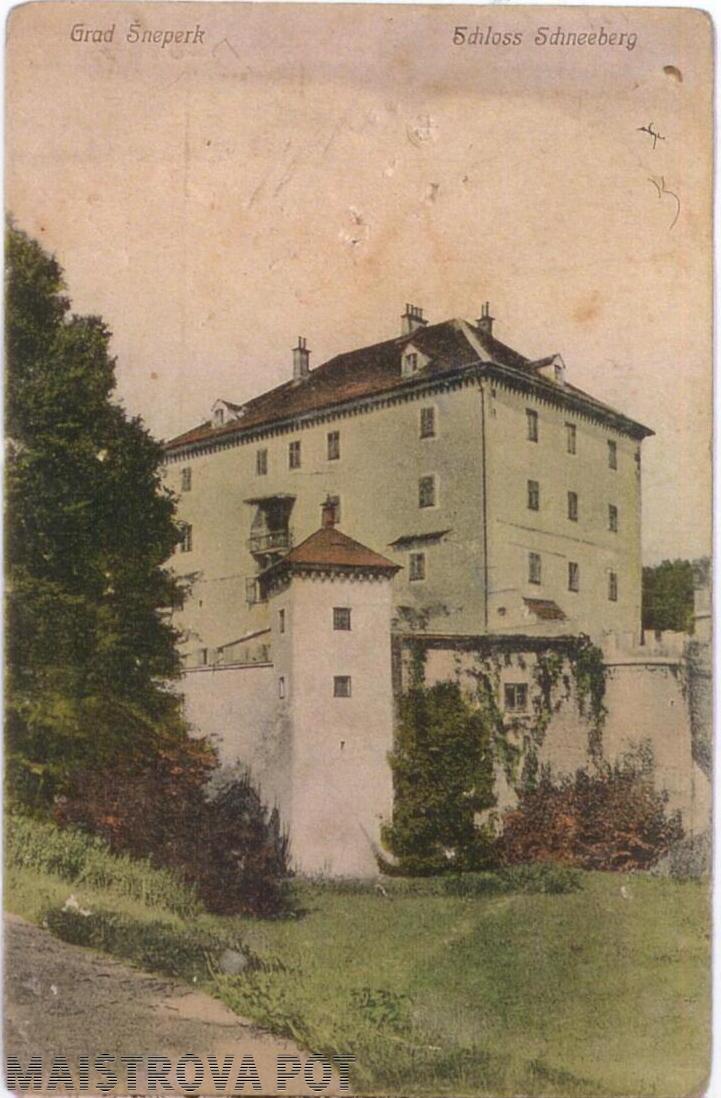Battle for the borders
Styria
With the consent of the National Council for Styria, Major Rudolf Maister took over military power in Maribor on 1 November 1918. The National Council promoted him to the rank of general and commander of the units in Slovenian Styria. On 9 November 1918, General Maister issued a declaration of mobilisation that enabled him to establish his army. On 3 November, however, at the demand of the Germans, he had to allow the establishment of a German armed security guard, the Marburger Schutzwehr. The Schutzwehr made plans to take Maribor, so Maister decided to disarm them. The disarming began on 23 November 1918 at 4 a.m. and lasted 47 minutes.
On 25 November 1918, Maister sent two companies of the Maribor Infantry Regiment to the Špilje railway junction. The next day, Austrian Colonel Rudolf Passy travelled from Graz to Maribor. On 27 November 1918, they signed a treaty that determined the borders for Styria and Carinthia. The provisions of the treaty, however, were not recognized by anyone. Maister’s idea of an immediate occupation of Carinthia was rejected in Ljubljana.
Three armed conflicts took place in Styria. On 14 January 1919, the Austrians attacked a Slovenian crew south of the Drava in Lučane. On February 4, 1919, Austrian-Hungarian troops attacked Slovenian soldiers in Radgona. The Slovenian side, under the command of Lieutenant Benedikt Zeilhofer, detected the Austrian attack in time and prepared an appropriate defence. Maister informed the French mission in Zagreb about the conflict and proposed to the authorities in Graz, Austria, that a demarcation line be established until a final decision was made at the peace conference. In the presence of the French mission, the negotiators signed the Maribor Treaty on 13 February 1919 in Maribor. The last major clash was on March 12, 1919 near Soboth beyond Pernice. General Maister then took brave measures to prevent further military actions in Styria.
On Monday 27 January 1919 (“Bloody Sunday”), the Slovenian fighters suppressed German demonstrations in Maribor; the protesters tried to break into the Town Hall during a visit of the US delimitation commission.
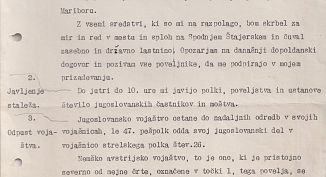 Maister's first order after taking command in Lower Styria, Maribor, 1 November 1918 at 4 p.m.; kept by the PAM.
Maister's first order after taking command in Lower Styria, Maribor, 1 November 1918 at 4 p.m.; kept by the PAM.Carinthia
Maister fought for Carinthia with the sword and diplomacy. The minutes of the sessions of the National Government testify that from November 1918 onwards he wanted to occupy Klagenfurt, which was (similarly to Maribor for Styria) necessary in order to take control of Slovenian Carinthia. The National Government in Ljubljana naively believed promises that the Entente would give Slovenians as much territory as they wanted and forbade Maister from any military action. It also renounced the boundary delimitation agreement for Styria and Carinthia, which Maister had realised at the end of November 1918 and which would have provided Slovenia with its entire ethnic territory in Carinthia. The government then withdrew Lieutenant Franjo Malgaj, who had previously taken Pliberk and Velikovec on Maister’s orders, from Carinthia. Maister returned to the Carinthian theatre during the collapse of the Slovenian offensive in early May 1919, when he prevented the penetration of German-Austrian troops into Styria. With this victory he ended his Carinthian struggle in command of the Labot detachment at the end of May and in the beginning of June 1919. In this offensive, the entire Slovenian ethnic territory in Carinthia was liberated – Maister’s legacy – MNZS, MNOM.
In the second part of the Carinthian episode – ending with the 1920 plebiscite – Maister appeared first as commander of the Carinthian border command and later as president of the National Council for Carinthia, the central political body directing all activities before the plebiscite, and commander of the gendarmerie in plebiscite Zone A.
The plebiscite in Carinthia on 10 October 1920, despite the efforts of Maister and the National Council for Carinthia to persuade Slovenes to vote for unification with their native nation, was lost by the Slovenian side. The Republic of Austria won 59.1% of votes and the Kingdom of Serbs, Croats and Slovenes 40.9%.
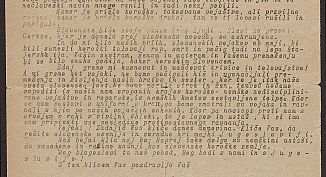 Address by General Maister before the victorious Yugoslav offensive in Carinthia, which began on 28 May 1919; kept by the ARS.
Address by General Maister before the victorious Yugoslav offensive in Carinthia, which began on 28 May 1919; kept by the ARS.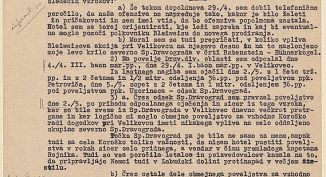 Maister's answer to General Smiljanić on the battles before the loss of Carinthia in May 1919; kept by the ARS.
Maister's answer to General Smiljanić on the battles before the loss of Carinthia in May 1919; kept by the ARS.The Rapallo border
On 26 April 1915, the Kingdom of Italy signed the secret Treaty of London with France, the United Kingdom and Russia, promising Italy a large part of the border area of Austria-Hungary inhabited by Slovenes in exchange for its entry into the war. On 23 May 1915, Italy declared war on Austria-Hungary, and after the latter’s disintegration in November 1918 occupied over a quarter of Slovenian territory: Slovenian Istria, Primorska and most of Notranjska.
The Kingdom of SHS and the Kingdom of Italy failed to reach an agreement at the Paris Peace Conference in 1919. At the conference in Rapallo, on 12 November 1920, they reached an agreement on the course of the border, with which Italy exceeded the London Agreement. The national border ran along the line Mangart–Triglav–Krnice–Špehovše–Hotedrščica–Planina–Snežnik–Rijeka.
The border between the two countries was determined by the Italian–Yugoslav Boundary Commission, established on 23 February 1921 in Ljubljana. The president of the Yugoslav part of the commission was Rudolf Maister. Even before the signing of the Treaty of Rapallo, he managed to achieve that part of the territory between Logatec, Unec and Rakek was given to Yugoslavia. The commission’s seat was occasionally at Snežnik Castle, which was owned by the Prussian prince Hermann pl. Schöenburg-Waldenburg – Snežnik Castle. The Commission began work in the field in February 1921 and completed it in 1926. The Yugoslav political leadership dissolved the commission on 2 October 1923, before the end of its term, and forced General Maister to retire. His place was taken by the Serbian officer Daskalović, followed by Deraškić, who also approved the Italian border proposal.
In order to determine the exact boundary line between the Yugoslav–Italian–Austrian triple border and Rijeka, 84 maps were made, on which all the boundary stones, including their altitude and the distance between them, were marked. In determining the boundary line in the field, the delegation set in place three types of boundary stones: the primary boundary stones – one metre tall numbered stones. Between these they set down secondary boundary stones, marked with a sector number and a sequential Roman numeral, that specified the boundary line more precisely. There were 69 primary, 4508 secondary and 38 special boundary stones on the 244.5-kilometre-long border.
